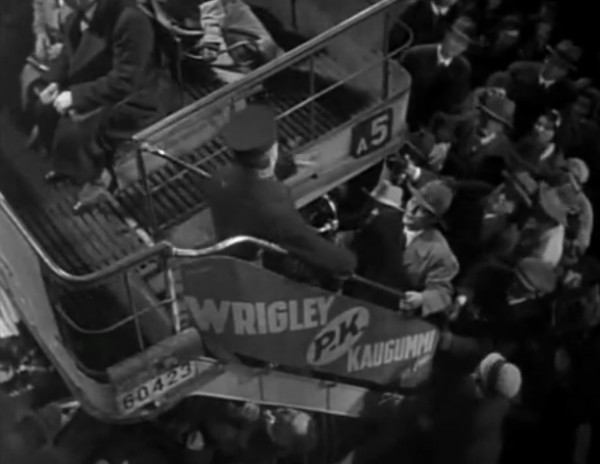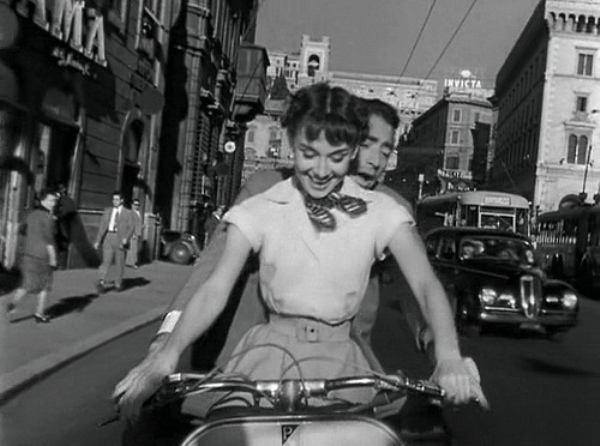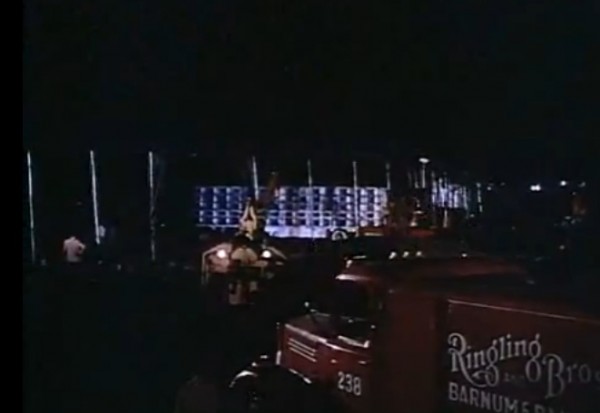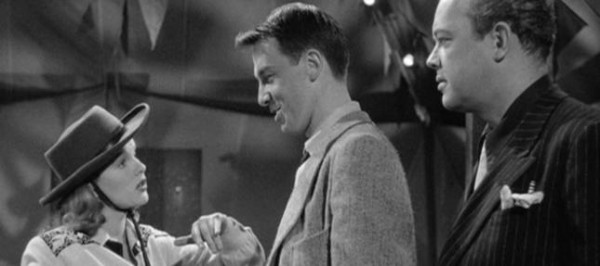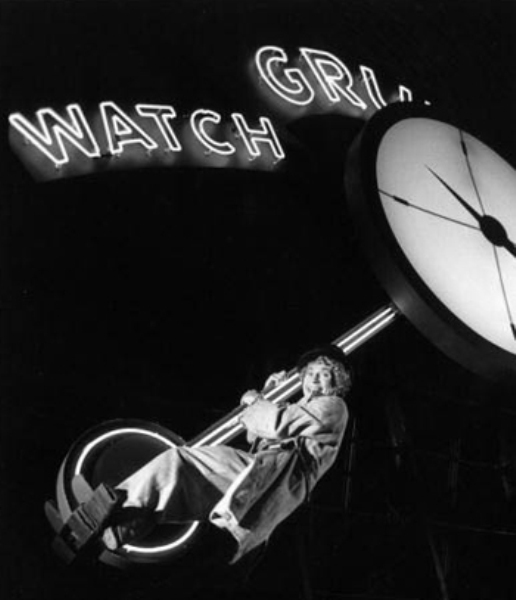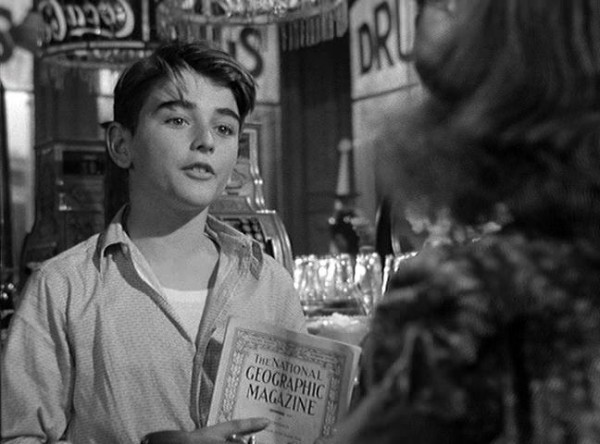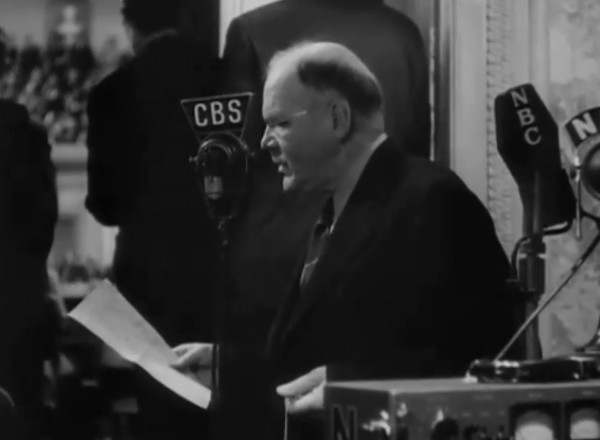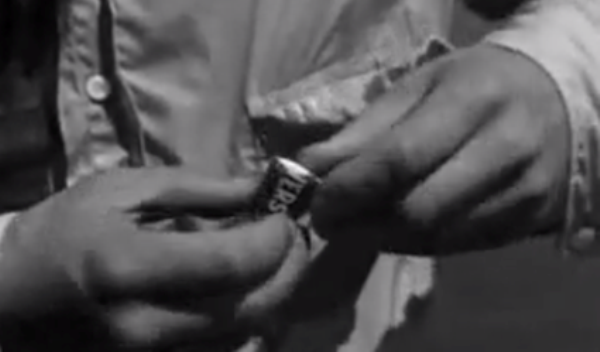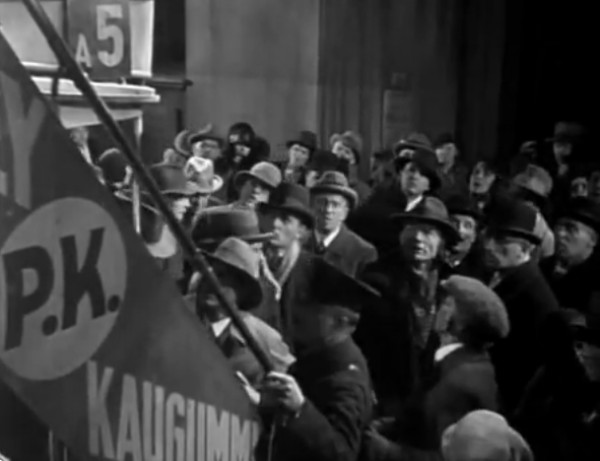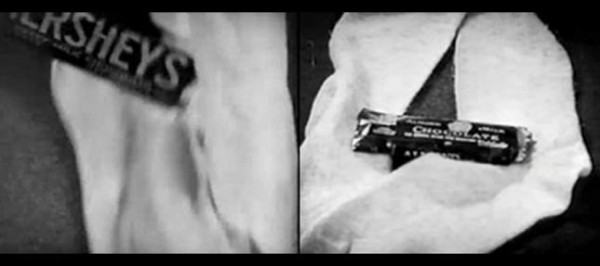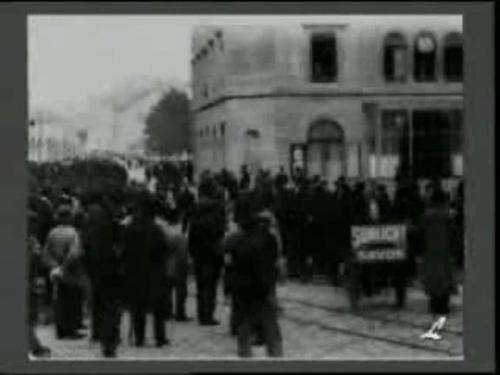Movie audiences today probably tend to think of product placement as a relatively recent phenomenon — perhaps dating back to the 1980s, at the earliest. This may be when the practice came to the fore in the public consciousness — with the conspicuous, impossible-to-ignore trail of Reese’s Pieces followed home by an alien named E.T. However, the truth is that advertising and publicity in the form of product placements goes back as far as the movie business itself. From the very earliest days of cinema, movie studios willingly featured products, or ads displaying them, in return for some much-needed financing. And while the masses may have remained ignorant about what was going before their eyes, it didn’t go unnoticed by everyone. For example, 1919’s The Garage, directed by and co-starring silent comedy actor Fatty Arbuckle, was strongly criticized in one trade publication for featuring Red Crown gasoline. Yet, as we shall see, the link between advertising and the moving image was established even before plots and narratives were in place as we would recognize them today. Here, then, are 10 insidious early examples of product placement you may not have known about.
10. Roman Holiday – Vespa (1953)
Audrey Hepburn and Gregory Peck have a wonderful time whizzing around The Eternal City in the delightfully picturesque film that is Roman Holiday. The charming feelgood movie kick-started Hepburn’s glittering Hollywood career as she won an Oscar for her performance in it. Her chosen mode of transport in this timeless romantic comedy? Italian scooter manufacturer Piaggio’s Vespa, of course! The two-wheeler reportedly garnered the company 100,000 sales, proving that product placement makes a lot of sense in the right context. It certainly seemed to work for Piaggio.
9. The Greatest Show on Earth – Ringling Bros. and Barnum & Bailey (1952)
Filmed with “the Cooperation of Ringling Bros. – Barnum & Bailey Circus,” The Greatest Show on Earth can, on one level, be viewed as one giant commercial. Running for a whopping 152 minutes, Cecil B. DeMille’s epic features many cases of product placement — as many as 19, according to one scholar. In fact, the entire movie revolves around the product that is the famous circus troupe itself (1,400 of its members appeared in it). The movie tells the stories of various performers, notably The Great Sebastian and his girlfriend Holly, but there’s only one true star of this show: one of the greatest box office successes of all time.
8. Gun Crazy – Bulova Clocks (1950)
By 1950, businesses were well aware of the power of film to sell not only a product but the idea behind a product. In Joseph H. Lewis’s Gun Crazy — the film noir feature that tells the tale of a husband-and-wife pair of armed robbers — the strongly-featured product on display was the Bulova brand of clocks. Part of the movie’s climax, set in the Armour meat-packing plant, shows one of the clocks squarely in frame. The gun-toting lead characters in the film rarely miss a shot, and the audiences of the day would have had to have been blind to have missed this one!
7. Love Happy – Mobil (1949)
In Love Happy, those wacky, slapstick performers the Marx Brothers help out a group of young Broadway hopefuls with food donations. Much to everyone’s surprise, one of their gifts, a can of sardines, actually contains Romanoff diamonds. In the ensuing chaos, Harpo tries to evade villains by ambling all over the New York skyline amongst various billboards which host ads for General Electric, Kool cigarettes and Wheaties. At one point, a sign for Mobil gas stations appears directly in the shot, and indeed Harpo clambers all over it — making his escape on the company’s old flying red horse logo. Yet, while Harpo may have gotten away, the movie didn’t escape some heated film industry criticism for its shameless plugs.
6. It’s A Wonderful Life – National Geographic (1946)
Frank Capra’s Christmas classic about the angel-assisted redemption of Jimmy Stewart’s suicidal small-town businessman is rightly regarded as one of the greatest feelgood movies of all time. Yet it also includes a very deliberate product placement. The perpetrator in this instance was National Geographic. A copy of the magazine is seen squarely in shot in the hands of young George (Stewart’s character as a kid), who has dreams of becoming an explorer. As a passport to the realization of dreams and aspirations, the magazine did very well for itself with that scene!
5. Mr. Smith Goes to Washington – CBS and NBC (1939)
Once again starring Hollywood legend Jimmy Stewart and directed by filmmaker Frank Capra, Mr. Smith Goes to Washington (somewhat ironically) tells the story of good prevailing over political corruption, with the naive eponymous character delving into the muck and mire of the U.S. Senate. Yet the production of the movie itself was not without intrigue, as noticeable endorsements are given to news media outlets NBC and CBS, both of whose cameras are featured. In total, only four product placements made the cut, but you’d have had to do more than blink to miss them.
4. Horse Feathers – Life Savers (1932)
In Horse Feathers, another Marx Brothers comedy (this one centered around a college football game), the minty confectionery Life Savers get a good dose of plugging. Yes, it’d almost be fair to say that the little mints have their own part in this movie! Not only is the candy unwrapped in front of the camera, but it’s actually used as the punchline of a joke. When Thelma Todd’s character falls out of her canoe to get herself all wet in a river, she calls out for a lifesaver. Right on cue, she gets what she asked for courtesy of Groucho, who throws her — you guessed it — a mint with a hole in it.
3. M – Wrigley’s PK Chewing Gum (1931)
Fritz Lang’s nightmarish vision of a child murderer stalking a German city sticks in the memory for many reasons, few of them pleasant. However, one everyday item you’d be forgiven for not associating with the powerful German film is chewing gum. Be that as it may, if you look not-particularly-closely at one scene featuring a staircase near the start of the movie, you’ll see a giant ad for Wrigley’s PK, proudly fluttering beneath a banister for all to see. The ad stays in the shot for about 30 seconds, and goes to show that the gum really is “long-lasting!”
2. Wings – Hershey’s Chocolate (1927)
Wings — a classic silent movie, and the first film to win the Oscar for Best Picture — featured a fairly conspicuous plug for Hershey’s chocolate. The story about World War I fighter pilots is fondly remembered by many for its romantic portrayal of war and loves lost and won. However, it is also now remembered as being one of the very first silent films — certainly among Hollywood movies — to contain an example of product placement. And what chocolate product wouldn’t want to be associated with such an epic tale of daring-do above the clouds?
1. Défilé du 8eme Bataillon – Sunlight Soap (1896)
And so back to the dawn of cinema, with this French film from godfathers of the moving image, the Lumière brothers. Meaning “Parade of the 8th Battalion,” the short is part of the fruits of the collaboration between the Lumières and François-Henri Lavanchy-Clarke, a Swiss businessman, who publicized and distributed the brothers’ films — in return for advertising space. In that amazing year of 1896, Lavanchy-Clarke had some products he wanted to promote on behalf of British soap manufacturers the Lever Brothers — whom he was working with. One such product was Sunlight Soap, the logo of which was to appear emblazoned on a wheelbarrow in the film. The world looked on, likely unaware that the birth of product placement was unfolding before their eyes.
